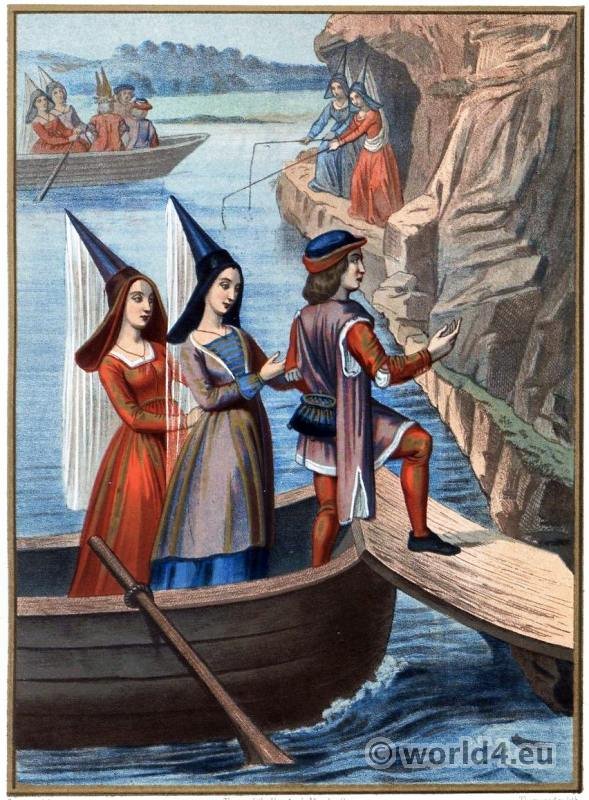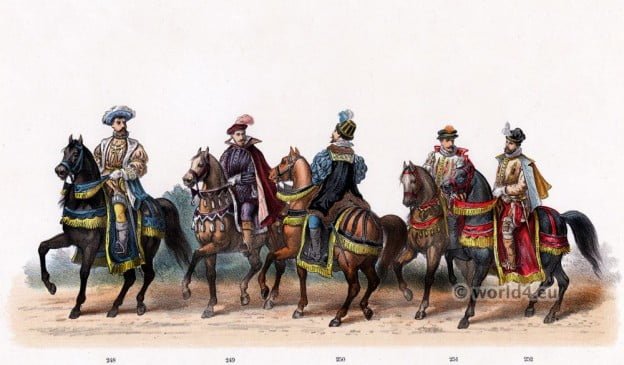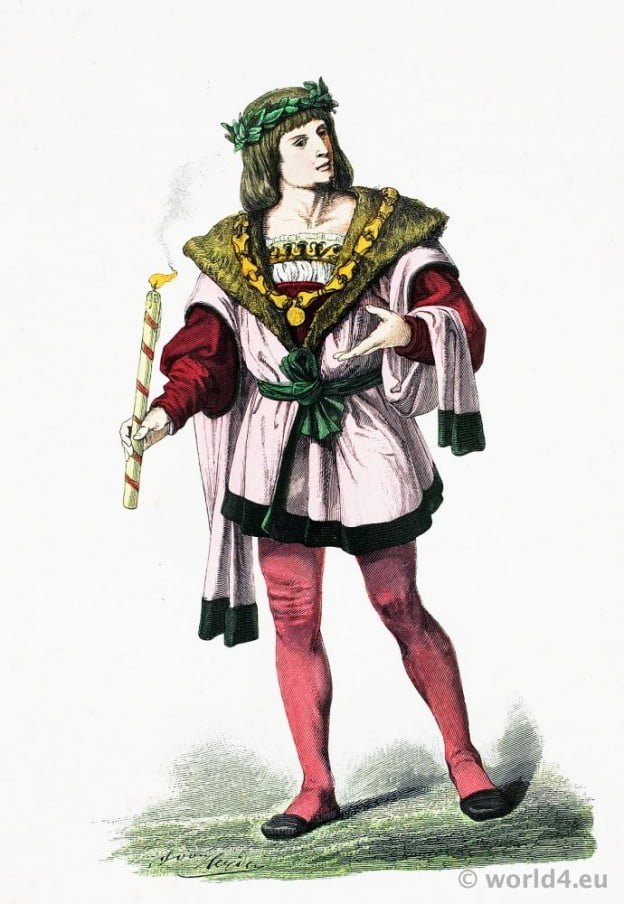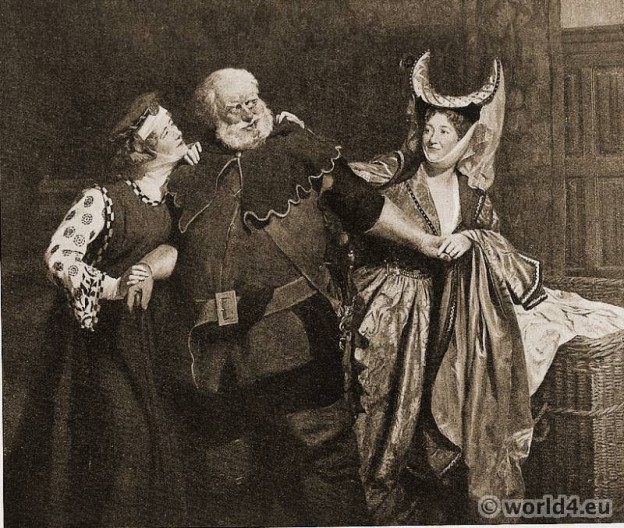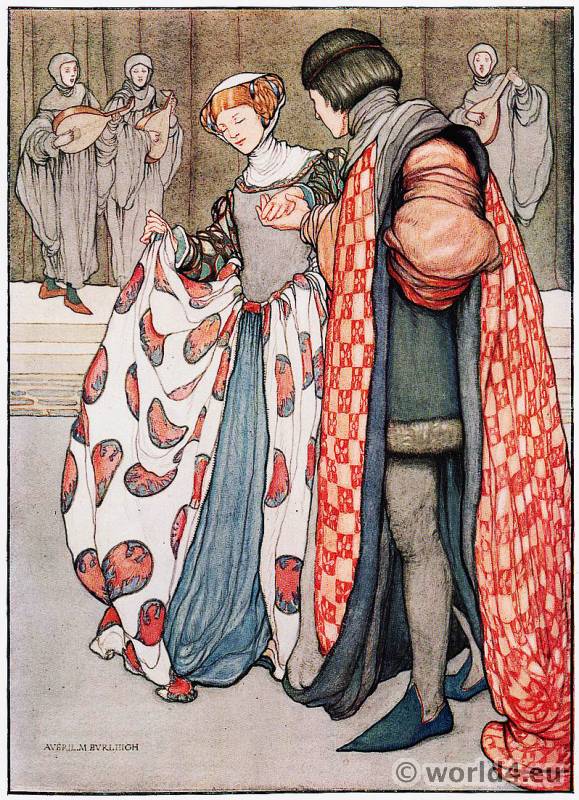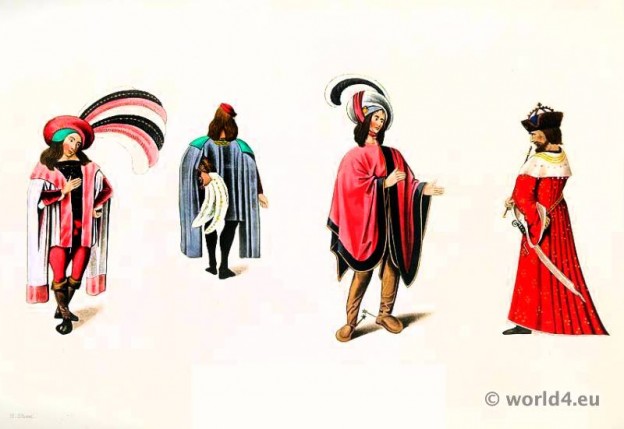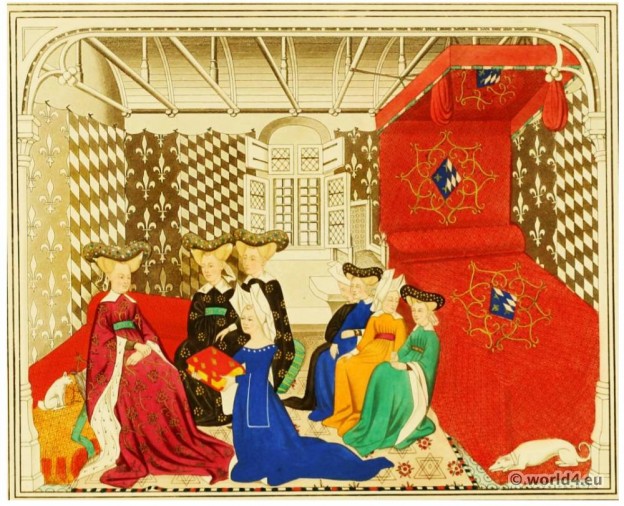The ladies travel to see. Burgundy fashion 15th century.
Tag: Burgundian fashion period
Burgundian fashion period between 1350-1500. In the 15th century the Duchy of Burgundy was the leader in the European fashion. Characteristic of the Burgundian women’s fashion at the end of the Middle Ages, as part of the epoch of Gothic, was the very form-fitting clothes, with long trailing skirt and tight laced bodice. The waist ended under the deep cutout, which was bordered by a belt. The head covering for women is an acute or obtuse cone, from which a long veil called Flinder hangs down. Under the term hennin, evolved in a short time a number of different forms and variations. The medieval toed shoes were long and the clothes were playful and detailed. Men decorated their clothes with many small clamps, sleeves were decorated with small piece of cloth, called Zaddeln. Known from the Middle Ages Mi-parti, took on a new bloom. In this case the clothes got two different colors. Hairline and eyebrows were plucked to achieve a high forehead. The white, flawless skin was a sign of beauty.
State-entry of Emperor Charles V. Costume cavalcade. Marshall of Flanders.
Guelders Wars. The Guelders Wars was a warlike dispute over the Duchy of Guelders between the United Duchies of Jülich-Kleve-Berg and Emperor Charles V in 1543. The wars lasted from… Read More
The Medieval Burgundy Aristocracy
Burgundy, a region located in east-central France, has a rich historical tapestry that traces its origins back to the Roman Empire.
German patrician woman in Gothic costume.
German patrician woman in Gothic costume. Burgundy fashion. Gallery: “Sheets for costume design: historical and folk costumes. Published by Franz Lipperheide, 1876-1887.
The Hennin or Reticulated Headdress of the 15th century.
During the reign of Henry VI. a reticulated headdress of a different shape was worn. It was in favour in France from about 1410 onwards. Headdresses of the 15th century.
German costume history. Women fashion of the 15th century.
German costume history. Middle ages. Women fashion of the 15th century. The fashions that prevailed at the end of the 14th century were still in vogue at the beginning of the… Read More
The Merry Wives of Windsor by William Shakespeare.
Mrs. Kendal, Miss Ellen Terry and Mr. Tree in ” The merry wives of Windsor,” by John Collier. The Merry Wives of Windsor is a comedy by William Shakespeare from 1597. The… Read More
Averil Mary Burleigh. English women painter.
Drawings by Averil M. Burleigh. Published in the International Studio in 1913.
The Romance of the Rose. The Art of courtly love.
The Romance of the Rose. The Art of courtly love. 15th century.
Christine de Pizan presenting her manuscript
Christine de Pizan presenting her manuscript against the Roman de la Rose to Queen Isabeau of Bavaria, France c. 1410 – c. 1414.

